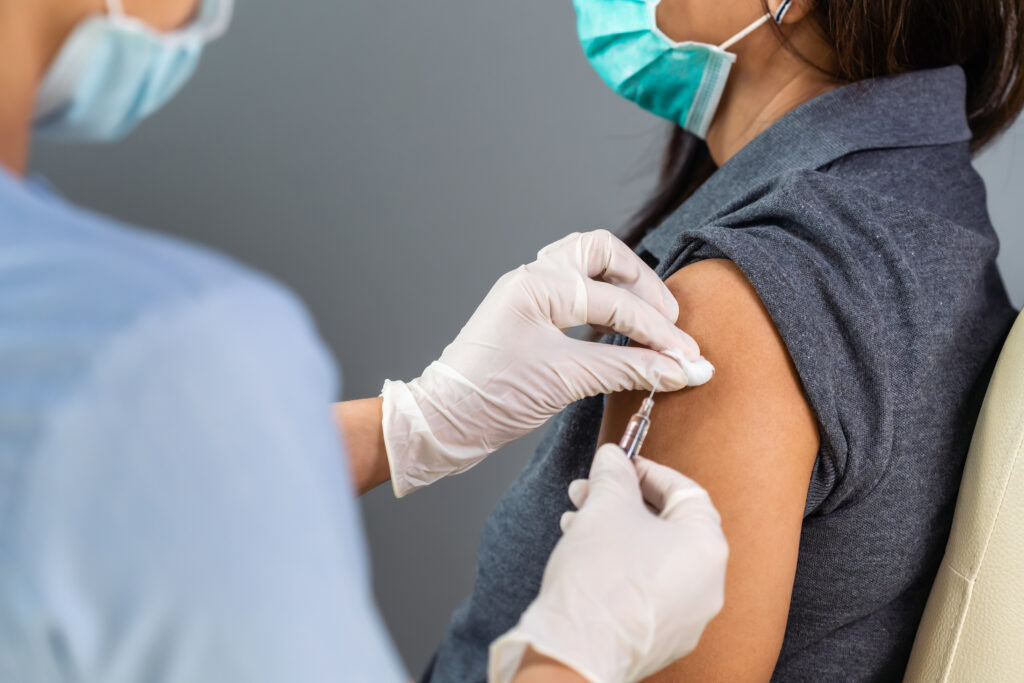Public health officials today are understandably focused on their top priority— overcoming Covid-19 vaccine shortages and distribution snafus to meet overwhelming demand. But they will soon have to pivot to a challenge that could prove more daunting: persuading enough people to take a vaccine to achieve herd immunity in the U.S.
In April of 2020, 82% of survey participants in USC’s Understanding America Study said that they were likely to get the vaccine once it becomes available to them. By January 2021, that number shrank to 64%, representing roughly 134 million American adults. That spells trouble for herd immunity. By one estimate 150 million adults will need to be vaccinated by Sept. 1, combined with as many as 50 million cases of natural immunity from exposure to the virus, to allow the country to begin to return to a semblance of normality.
The good news is that once more Americans have been vaccinated, the rest will likely come around. In 1954, Gallup found that 60% of people said they would get the newly created polio vaccine, and 31% said they would not be inoculated. That morphed into widespread acceptance.
Different strategies for encouraging vaccine adoption have been used for smallpox, seasonal flu, and childhood diseases. The lesson from past campaigns is that even good and safe vaccines need boosters, and not just the kind with needles. A massive public service effort should be set up now before the supply of Covid-19 vaccines exceeds demand.
Psychology and behavioral science provide some key insights about how such a campaign should be designed:
- Be clear. Communications must be in everyday language, both for ease of understanding and to make information easier to find online. My colleagues and I found that parents who were deciding whether or not to vaccinate their children against childhood diseases used simple search terms, such as “shot” or “vaccine.” Unfortunately, when they typed those terms into online search engines, they were more likely to land on anti-vaccine websites than on the CDC website, which was replete with accurate but very technical jargon. A Covid-19 campaign must own the common ground.
- Make it easy. Another study found that people were more likely to get a flu shot if they received an invitation that included an appointment than if the invitation just asked them to call for an appointment. Not everyone who had an appointment included in their invitation was able to make that appointment. Although some did not show up, many would reschedule for another time. Other ways to make vaccinations easy include offering them in as many locations as possible (rather than asking people to go out of their way), and at a variety of times (so that they don’t have to take off time from work).
- Emphasize social norms. In a recent study, we found that people were more likely to get a flu shot if they knew that friends and family were getting one. This may be more of a challenge with the COVID-19 vaccine given all of the stay-at-home orders. Making it more visible that people are getting vaccinated may increase vaccinations, setting up a virtuous cycle. For example, this could be done by giving people “I got vaccinated” stickers. Or by encouraging people to post on social media when they have gotten vaccinated, perhaps with a vaccination selfie.
- Make it fair and transparent. Consumer research has long suggested that if people miss out on a desired product because of limited availability, they often do not want the product anymore. My colleagues and I recently found that people may lose interest in the COVID-19 vaccine if they are asked to wait. They may especially refuse the vaccine if those who get vaccinated first are not the ones people think should be vaccinated first. Vaccines should be given out in an order that is clearly communicated and perceived as fair.
- Address people’s concerns. Different communities may have different concerns about the vaccine. For example, 65% of African-Americans are not confident that the development of a COVID-19 vaccine is taking the needs of Black people into account. A public service campaign may be able to address some of these concerns. Community leaders should be involved in the development of communication strategies – which will increase trust and the visibility of peers getting vaccinated.
The first phase of vaccine distribution was not planned well, despite months of trumpeting that the vaccines would be available by the end of 2000. That lesson can be learned for the second phase. Industry and government at all levels need to adopt a communication strategy that is grounded in psychology and behavioral science so that vaccine hesitancy doesn’t leave us short of the finish line.
